Winners and finalists of Travel Photographer of the Year share their tips for success with Geoff Harris, who also gets some advice from co-founder Chris Coe
Since starting in 2003, Travel Photographer of the Year (TPOTY) has become one of the most prestigious photography competitions in the world. For the most recently judged competition (2022), some 20,000 images were submitted from amateur and professional photographers from 154 countries. For the most recently judged competition (2022), some 20,000 images were submitted from amateur and professional photographers from 154 countries.
Winning tips from the organisers
So what does it take to stand out in such a tough contest? As well as some tips from winners and selected finalists below, we caught up with TPOTY co-founder Chris Coe. ‘Winning images have to be good enough to print, but don’t let a lack of technical perfection dissuade you from entering,’ he explains.
‘There are images that are not technically very good but have a fantastic mood or sense of what is happening. The second reason that images or portfolios don’t get through is that entrants haven’t followed the brief. People tend to enter their favourite pictures, rather than the most suitable ones. So get feedback from a third party. Then, think about originality and a fresh take on the subject. It’s hard to be totally original, but you need to try to stamp your particular vision on an image. Finally, if you are entering a portfolio, the images need to tell a story and be a progression, rather than a repetition.
When portfolios are judged, they are seen together, so try not to do anything which disrupts this – mixing black & white and colour, for example, or submitting three landscape images and then a portrait.’
If you enjoy travel photography, don’t forget that as well as Travel Photographer of the Year, the travel round of our massive Amateur Photographer of the Year competition is now open. We’ve also teamed up with Zoom Tours to offer AP readers a wide range of fantastic photography workshops, in some truly amazing destinations.
Read on for some exclusive tips and insights from the winners of this year’s Travel Photographer of the Year.
Matjaz Krivic, Slovenia

Canon EOS 5D Mark IV, 100mm lens, 1/1000sec at f/8, ISO 100
Najin and other portfolio images
Overall Winner, Travel Photographer of the Year
See Matjaz’s website and Instagram page.
This image shows 33-year-old Najin – one of the world’s last two remaining Northern White rhinos – and her keeper, Zachary Mutai, in Ol Pejeta Conservancy, Kenya. There were numerous special moments between them, but the winning shot somehow resonated the most. The intimacy between the caretaker Zachary Mutai and Najin offers us a glimpse of hope.’
Matjaz’s top tips
- Persevere. I’ve been entering TPOTY since 2003 when I was given a Judge’s Favourite Award. Winning it this year feels really special to me. I will definitely enter the competition again!
- You need to work hard on your chosen project. We were waking up with Najin and Fatu, the other rhino, walking with them as they were grazing, and watching them as they fell asleep.
- As well as being prepared to work hard you need lots of enthusiasm – I believe it’s the single most important thing you need to succeed.
Dana Allen, USA

Nikon D4, 28-300mm lens, 1/500sec at f/16, ISO 800
Elephants, Hwange National Park, Zimbabwe
The Art of Monochrome, Best Single Image in a Portfolio
See Dana’s website and Instagram page
‘I have entered the competition a few times now, most recently in 2020, where I was awarded for a photograph in the Islands category. I guide small groups and arrange private photographic safaris around Africa and also to the Arctic. I have been teaching photography and running workshops for many years now.’
Dana’s top tips
- If you are entering a black & white category, remember black & white is just another level of abstraction, making the viewer connect with the composition and interact with the photo on a different level than if it was in colour. Images with bold shapes and tones reproduce particularly well in black & white.
- You never know what will catch the judges’ eye, but, it is always nice to strive to create something different and unique – whether it be the subject, composition or an exciting moment.
- Consult with others about your entries to see which images they react to. You can sometimes be too close to the image, and the experience, to be the best judge.
Cal Cole, UK
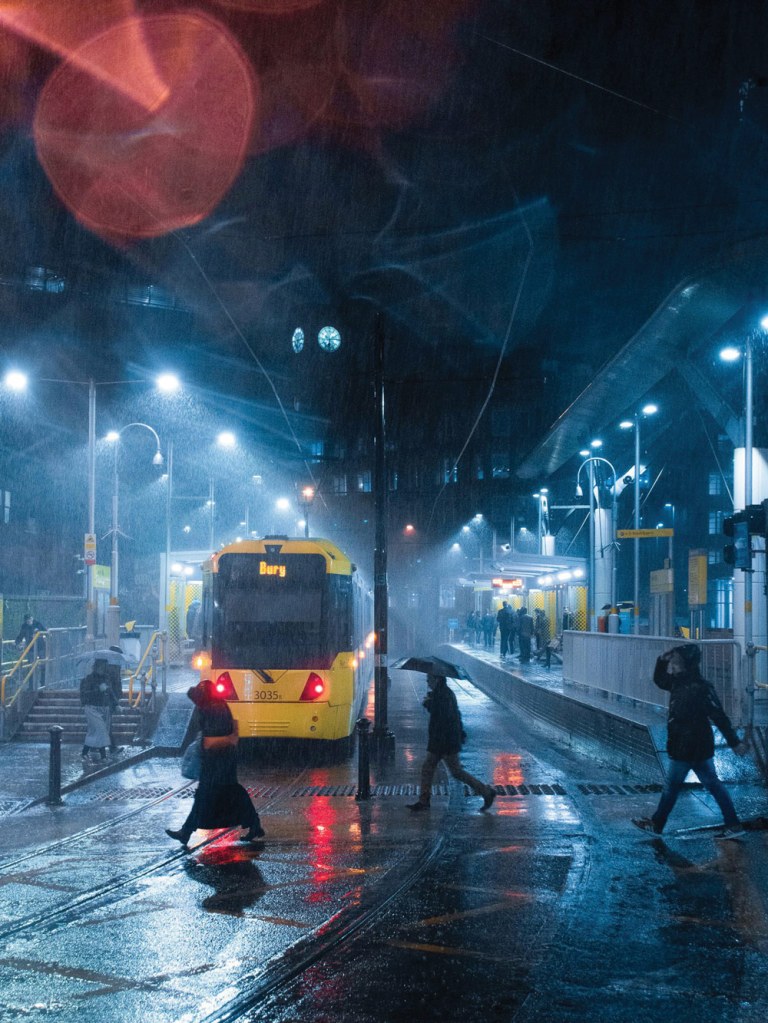
Nikon D3200, 18-135mm lens, 1/180sec at f/4, ISO 3200
Manchester
Young Travel Photographer of the Year, Winner
See Cal’s website and Instagram page.
‘This is the first time I’ve entered the competition, so I’m very humbled. I picked a set of images that I felt worked well together and embodied the way I perceived Manchester; I was definitely aware that there would perhaps be more exotic locations in other entries butI hoped the fact I had shot somewhere nearby to me might help me to stand out more.’
Cal’s top tips
- Look for beauty close to home. I think it can feel more rewarding to take a great image of somewhere nearby than travelling far for an image people may have already taken.
- You don’t need to buy an expensive camera. I took the winning images using a Nikon D3200 DSLR, which you can pick up used for around $243/£200.
- Don’t over-edit. Some of the images are adjusted to a greater extent than others but all of them were edited in Adobe Lightroom using basic light and colour adjustments accompanied by filter and hue changes.
Lorenz Berna, Italy
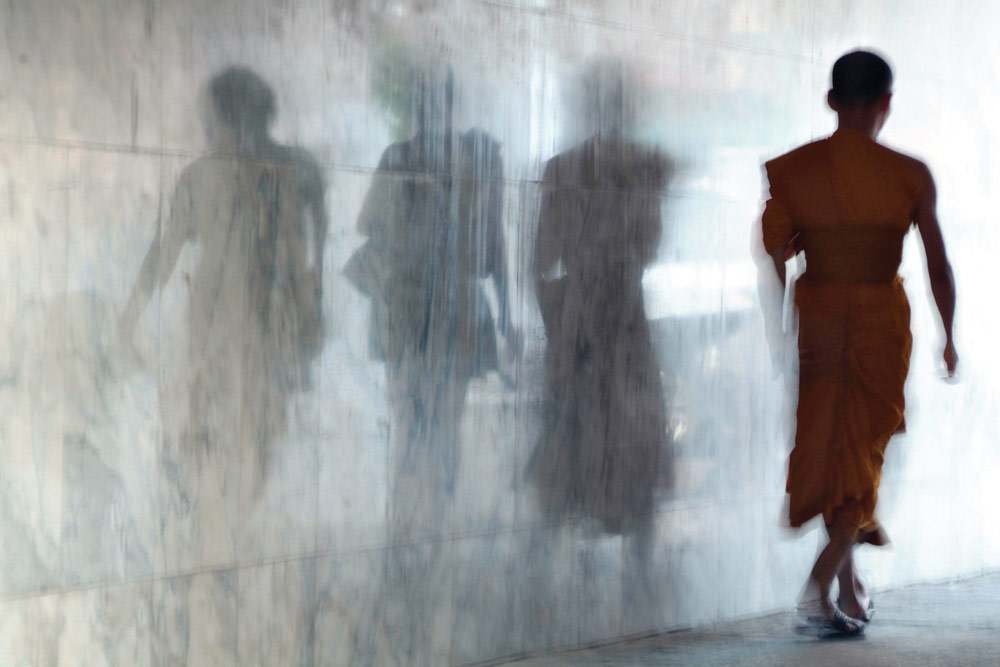
Fujifilm FinePix S3 Pro, 18-200mm lens, 1/6sec at f/5.3, ISO 400
Monks, Thailand
Creative Travel, One Shot, Winner
See Lorenz’s website and Instagram page
‘This is the first time I’ve entered TPOTY. I wanted to convey the sense of Samsara, the Buddhist concept of the cycle of reincarnations up to perfection and enlightenment. I returned three days in a row, waiting patiently under a white marble tunnel that led inside a monastery. I noticed that there was an interesting game going on with the monks, and the shadows of passers-by in the opposite direction. You see in your mind what you would like to happen and you just wait there, fully concentrated.’
Lorenz’s Top Tips
- In travel photography the most common trap is to fall into the cliché. That is the reason why I have chosen a more creative approach for Thai monks, a very familiar subject.
- Find a subject that interests you deeply and figure out how to show it to the world in the most interesting way. The longer you stay on a subject studying it and returning to it with different lights, angles and perspectives, the greater the opportunities to create something really significant.
- You don’t need an expensive camera. I used a 20-year-old Fujifilm FinePix S3 Pro equipped with a Nikon 18-200mm zoom lens that I had bought just three days before the shoot in a thrift shop in Bangkok!
Trevor Cole, Ireland
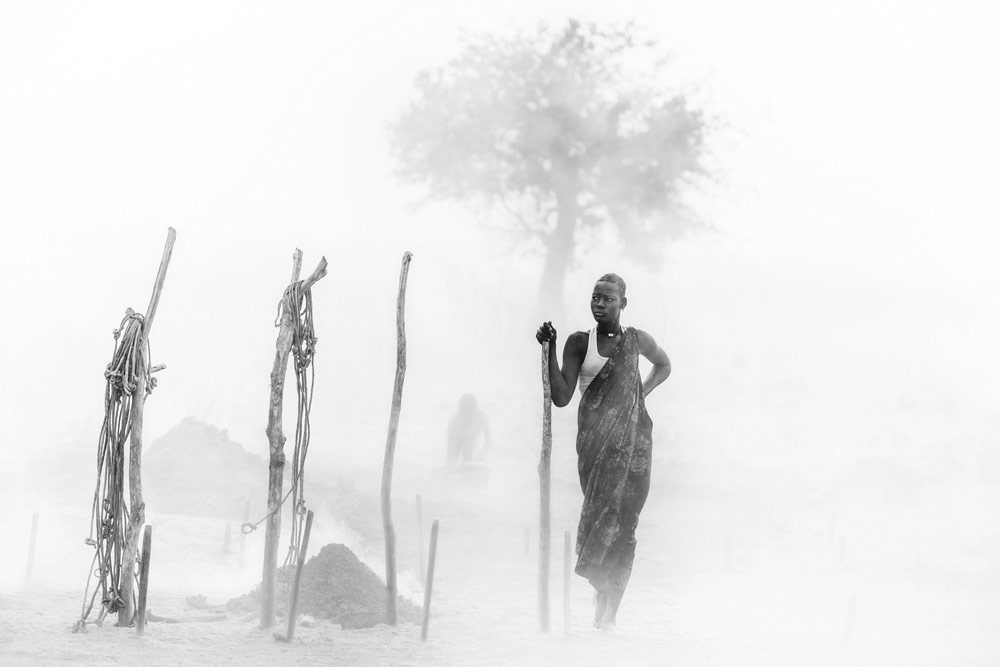
Nikon Z 7II, 70-200mm lens, 1/640sec at f/4, ISO 200
Herder, Terekeka, South Sudan
The Art of Monochrome, Special Mention
See Trevor’s website and Instagram page
‘I’ve been a finalist nine times. This ‘Special mention’ image was taken in Terekeka, South Sudan. A herder of the Mundari tribe waits for her cattle to return from grazing on the White Nile floodplain. She then tethers them to a post for the night.’
Trevor’s top tips
- Strive for originality. I love most genres of photography but capturing the rapidly changing cultures of remote areas in Africa has become a focal point.
- My lens has become my vision of indigenous people and with time I have tried to turn my photographs into emotive moments where I encapsulate a connection. Tourism can be degrading but it can, if sensitively done, also bring hope and cultural resilience.
Romain Miot, France
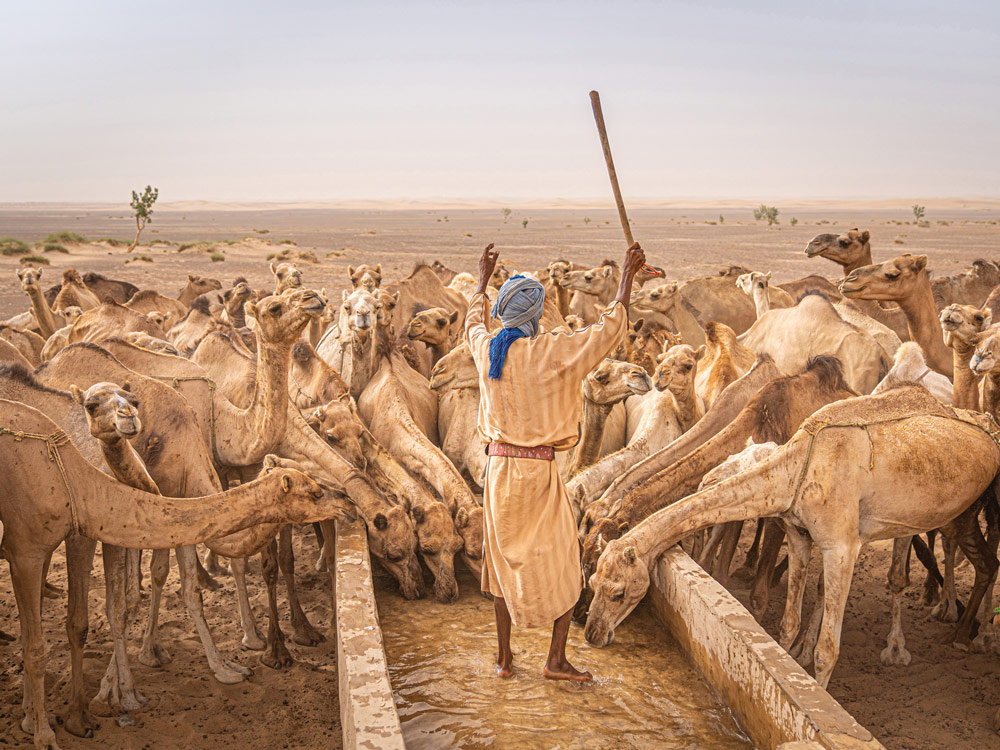
Sony Alpha 7 III, 24-70mm lens, 1/3200sec at f/2.8, ISO 125
The Camel’s Conductor, Mauritania
People’s Choice, Winner
Instagram and Twitter: @miotromain
‘I took this image during a trip to Mauritania, in west Africa, in September of 2021 as part of my goal to visit all the countries of the world. In the extreme south-east of Mauritania, between the UNESCO heritage ‘ksours’ (trading centres) of Oualata and Tichitt, I met up with this salt caravan after a four-day expedition in the middle of the Sahara desert.
No roads lead to this place, we drove through the endless sands. Wells have been dug throughout the desert for the camels to drink water through the caravans to Mali, Côte d’Ivoire and Burkina Faso where they will sell the harvested salt.’
Romain’s top tips
- Get a helping hand from someone who has the same camera, as they will understand the camera’s functions and settings.
- It’s very important to have the confidence to switch from automatic mode to manual. Manual might be more time-consuming, but through trial and error we learn to correct our mistakes and thus take better photos.
- Always shoot in raw. The raw image is not beautiful per se, but it holds all the information you need.
John Seager, UK
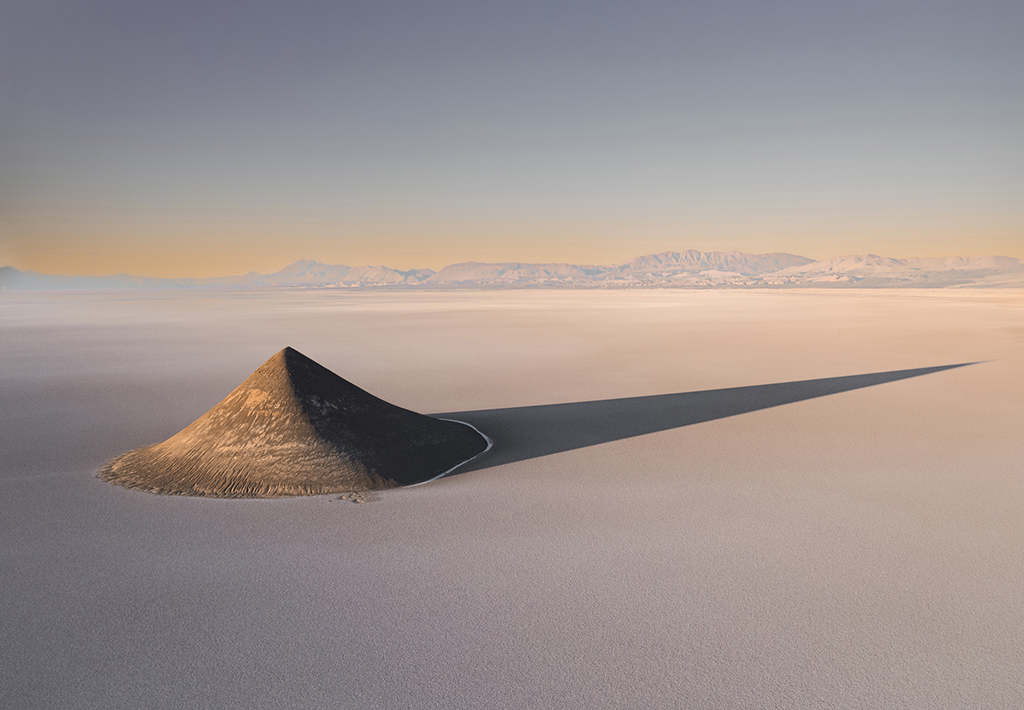
DJI Air 2S drone, 22.4mm lens, 1/730sec at f/2.8, ISO 110
Puna de Atacama, Argentina
Deserts to Rainforests, Best Single Image in a Portfolio, Winner
See John’s Instagram page
‘This image was taken with a drone in an area of north-west Argentina called the Puna. It’s part of the Argentina Atacama area, which runs into Chile and Bolivia. I’d been before and was blown away, so I was keen to go back after lockdown. The image shows a geological formation, that sits on a vast salt pan. It’s an almost perfectly conical shape and I timed it so I captured a long shadow before sunset.’
John’s top tips
- The most important tip is to find something original you are passionate about and make it your own.
- Sometimes you can get lucky, but you make your own luck through detailed planning. Apps such as PhotoPills are great for sunrise and sunset and night photography.
Alexej Sachov, Germany/Ukraine
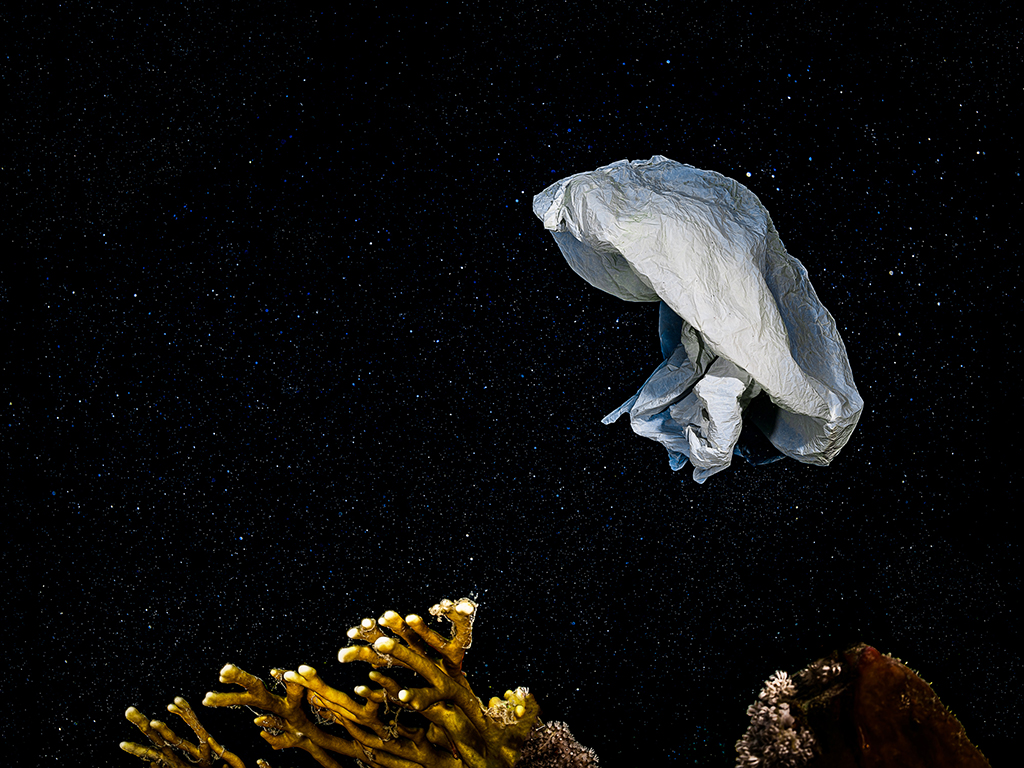
Fujifilm GFX100, 45mm lens, 1/100sec at f/18, ISO 100
Plastic Underwater, Egypt and Maldives
Green Planet, Blue Planet,
Category Winner
See Alexej’s website and Instagram page
‘This is the third time I have entered; previously I got highly commended and commended. I also won the Water, single image category. I’ve been shooting underwater plastic waste for about two years. These images were taken in Egypt and the Maldives. I use a Fujifilm GFX100 with underwater housing and a WACP-1, which is a conversion lens for in-water correction. It all weighs 15kg, so it’s quite heavy.’
Alexej’s top tips
- I also do a lot of general photography workshops to hone my skills. It’s good to learn from different genres of photography.
- If you are an underwater photographer, think carefully about composition. You also need to be confident with your diving skills, so you can give full attention to the photography.
Laura Storm, UK

Canon EOS 800D, 60mm lens, 1/125sec at f/9, ISO 100
Bonaire, Leeward Antilles
Green Planet, Blue Planet, Runner-up
See Laura’s website and Instagram page
‘The reefs that fringe this island are fabulous. There’s so much life, and every dive reveals something interesting. For an underwater photographer, it’s an uncrowded, unassuming paradise. I’m a Canon DSLR shooter and I favour cropped-sensor over full-frame models. Mostly because of the overall size once my camera’s housed for underwater adventures. Out of the water, with strobes, focus light, arm attachments, brackets, wet diopters and such, my rig weighs a fair few kilos.
‘The more hydrodynamic I can make my set-up, the easier I can move and position it underwater. I love experimenting, capturing arty interpretations and abstract expressions. A big aspect of underwater photography is about lighting your subject optimally. That has to be done using strobes and torches, because for macro work, there’s rarely enough ambient light. I used minimal post-production for my portfolio.’
Laura’s top tips
- For TPOTY, your images need to stand out in some way. You’ll find less- conventional travel images succeeding year on year, so try to be surprising.
- Find the best category to fit your work and push the boundaries artistically.
- With portfolios, each image has to work in multiple ways. You don’t want a weak link. Also, celebrate your individuality.
Further reading
Do Travel Photography like a Street Photographer
20 Best Accessories for Travel Photography
Flying with Camera Kit: How to Do It
The Best Backpacks for Photography








